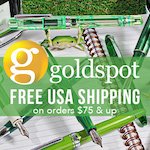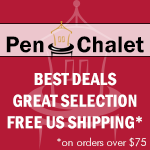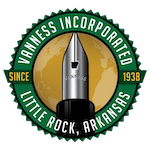I didn't need another Pilot Vanishing Point. I already had two: the famed Black Matte, which became one of the "pens who shall not be named" on the podcast, and a retro Black Faceted model, which is a mainstay of my collection. So why did I NEED this new Gun Metal Black Matte Vanishing Point? I rarely need any new pen, but this one I had to have.
It took a while for me to get on the Gun Metal bandwagon. I wasn't sure of the color scheme at first, but after seeing multiple pictures of it and checking it out in person I went for it. The barrel is slightly different than the full black matte version, with the grey area being smooth as opposed to a satiny matte feel, which is reserved for the tip, clip, middle band, and knock. It's quite a stunning look, especially in person.
It also sports one of the recently introduced black nib units, which I am in love with. I went for the EF nib, which is ridiculously small, even for me. I never recommend this size to anyone but I love it. Paired with a well lubricated ink like Sailor Nano Black, this nib writes wonderfully smooth and consistent. But boy is it fine. You really need to manage your writing angle with this one to make sure you are hitting the sweet spot.
Many people have asked what fountain pen best compares to the Pilot Hi-Tec-C 0.3 mm/0.4 mm gel ink pens. Pilot's EF nibs, as found in the Penmanship (which can be swapped into the Metropolitan or Prera) and the Vanishing Point, are the closest I have found. Looking at the writing sample in my Field Notes it is closest to the 0.28 mm Uni-ball Signo DX and 0.3 mm Hi-Tec-C, so that seems like a good range. Ink and paper will cause this to vary of course.
But back to this whole idea of needing this pen. Although yes, I got this pen for free as part of my JetPens sponsorship, I still couldn't justify it without selling one of my current Vanishing Points. I didn't see myself actively using two similar pens, so my trusty black matte VP, one of my first big fountain pen purchases, has found a new home. More than any other fountain pen I own, the Vanishing Point is made to be used, anywhere and everywhere. That is this pens job, so having one sitting around collecting dust would be doing it a disservice.
My friend Mel found the words I was struggling to find about my Field Notes Butcher Orange, and it applies here too: "By using it, it is now truly yours and you've fulfilled its purpose." Words to live by.
(JetPens is an advertiser on The Pen Addict and I received this product at no charge.)


















